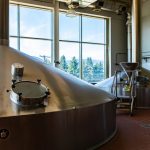
The malting process is a critical part of any brewing operation and is a highly controlled and managed step.
What is Malt?
Malt is often referred to as “the soul of beer” and dates back over 4,000 years. Malt is one of four essential ingredients used in producing craft beer which also includes water, yeast and hops. Malt provides colour, aroma, flavor, and body to every ale and lager, and can set each beer apart from another. Although a variety of grains have been used for brewing, barley is the preferred grain for beer. Barley itself can’t be fermented into alcohol, and so it is converted to malted barley, or malt, in a process called malting.
Base Malt And Speciality Malt
The ‘base malts’ are used primarily for brewing to product alcohol but ‘speciality malts’ are added to provide unique and specific flavour and colour to beer and lager.
Coloured Malts
Coloured malts are manufactured by heating green malt. The main type is crystal malt otherwise known as caramel malt which is found in UK beers. Crystal malts add extra colour and flavour along with improved stability and shelf-life.
Grain Selection
To provide brewers with the best crafted malt, the finest quality malting grains are selected. Barley farmers grow premium 2-row barley and other malting grains to ensure that they produce a consistent and high-quality ingredient for producing local craft malts.
The grain is taken to the malt house by the farmer. The barley is usually quality checked at this point rather than in the field. Its suitability is monitored for the following parameters:
- Grain moisture
- Nitrogen content (total nitrogen)
- Percentage of foreign matter
- Absence of fungal growth and metabolites
- Germinative capacity and germinative energy
- Water sensitivity
How is Malt Made?
The process of malting involves three main steps. The first is soaking the barley, which is also known as steeping to wake up the dormant grain. Next, the grain is allowed to germinate and sprout. Finally, heating or kilning the barley produces its final color and flavor.
Step 1: Steeping
The first and very critical step in creating quality malt is steeping. The purpose of steeping is to achieve an optimal moisture level in the grain normally between 44% and 46%. To achieve this causes the grain kernel to be ‘brought to life’ with water and oxygen.
Steeping is also a cleaning process which removes extraneous material although most barley grains will have been extensively cleaned and dried before steeping takes place.
The grains are immerse or “steeped” in water in large vessels, usually with conical bottoms for ease of emptying. Then follows an air rest period that allows the grain to absorb water and increase in size. The absorbed water activates naturally existing enzymes and stimulates the grain to produce new enzymes for metabolism. The water temperature and aeration are vital for producing high-quality malt. The steeping process can vary with grain type and size but typically occurs over a period of 24-72 hours. The length of time determines the type of malt produced. There is a split between wet steeping which is soaking in water and dry periods or air rest when the water is drained off. Aeration and CO2 extraction is also normally carried out during steeping.
The steeping is complete when the barley has reached a sufficient moisture level of between 44% and 46%. This allows for a uniform breakdown of starches and proteins.
Step 2: Germinating
The second step is a continuation of the germination process that started with steeping. Here, growth and modification of the grain occurs. From the outside of the grain, rootlets emerge from the kernel, and within the outer husk a shoot or acrospire grows.
Modification means the breakdown of protein and carbohydrates, mostly starch. Starch is the energy reserve of the seed and will power any metabolism to create plant structures and drive other biochemical processes. This metabolic change typically takes 4-6 days and results in what is called “Green Malt.”
To achieve a high quality and consistent germination process, the maltster controls temperature and moisture levels by regulating airflow and adjusting moisture content using a uniform water spray. To avoid grain clumping, non-uniform heating, and varying rates of germination, the grains are separated with periodic rotation. Even with modern equipment and this structured approach, the degree of modification is still gauged by our craft maltster through observation, a keen sense of smell, and by judicious handling.
Malting truly is part art and part science.
Step 3: Kilning
The third and final step in the malting process is kilning. Convection heat treatment dries the green malt to prevent further germination. If germination continued, the kernel would continue to grow. All the starch reserves needed by the brewer would be used by the growing plant.
For most malts, moisture is initially removed from the germinated grain in a step known as withering. It’s similar to that type of process used in the production of tea leaves. Additional drying further reduces the moisture content and prepares the malt for flavor and color development. Other important results achieved during the kilning process include enzymatic activity and friability. It is the controlled variations in this step that produces the wide range of malt colors and flavors used by brewers in crafting their unique and distinctive ales and lagers.
Once the malting process is complete, the malt is transported to a silo where it is stored for cleaning. The cleaning process removes unwanted rootlets, husk, and dust from the malted barley. The cleaned malt is stored in another defined silo and later bagged for packaging and shipment to suppliers.


Leave a Reply